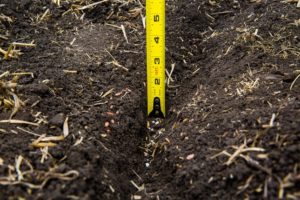 Fertilizer
Fertilizer
Plants require nutrients to grow. As plants grow, they use nutrients from the soil. When they are harvested, they take those nutrients with them and so they need to be replenished for the next crop.
Fertilizer comes from nature
Nitrogen fertilizer is made using natural gas and nitrogen from the air.
Potassium fertilizer comes from salts from evaporated oceans.
Phosphorus fertilizer comes from fossilized sea remains found in ore deposits.
Sulfur fertilizer comes from fossil hydrocarbons (often found in areas with high volcanic activity)
These naturally occurring minerals are manufactured into a form that plants can readily use –referred to as “synthetic” or “conventional” fertilizers or nutrients.
Compost and manure are example of “organic” nutrients. Many farmers recycle manure from animal barns or pens to improve their soil.
The “4 R’s”
Farmers are committed to the “4R Nutrient Stewardship” – applying the Right rate at the Right nutrient source at the Right time in the Right place. 4R Nutrient Stewardship is a science-based approach that focuses on increased production, environmental protection and improved sustainability.
See Our PDF to Learn More: DownloadPrint
Journey 2050 Lesson: 1
This resource is a great addition to Lesson 1 – Sustainable Food and Agriculture
SnapAg:
What are GMOs and are they okay to eat? What does organic farming look like? How are animals like chickens or cattle raised?
snapAG is a series of resources that invite students to explore the hot topics affecting the agriculture industry today. Topics range from organics, biotechnology, GMOs, livestock, and more.
Explore what’s trending in agriculture in Canada by browsing the topics here.
Sources available at: https://aitc-canada.ca/en-ca/learn-about-agriculture
snapAg is brought to you by Agriculture in the Classroom Canada and partners.



